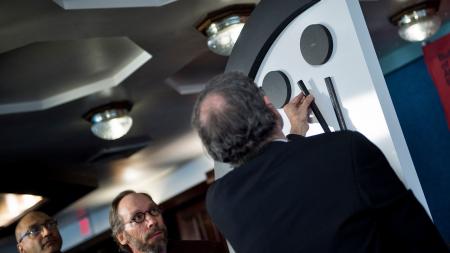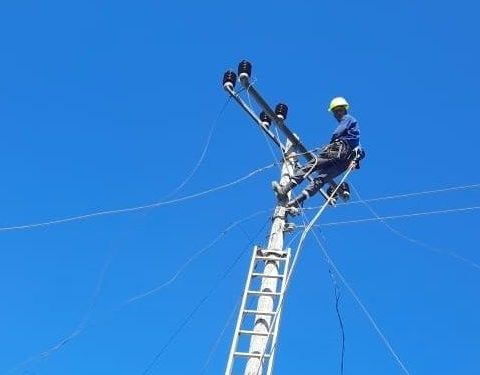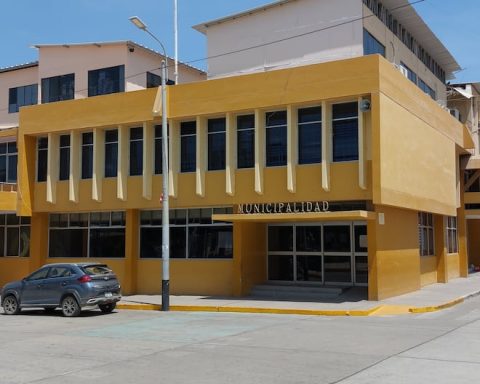The Doomsday Clock, which symbolically counts the time remaining until the end of the world, marked this Tuesday that “humanity has never been so close to a planetary cataclysm”, and its hands were moved by atomic scientists from 100 to 90 seconds from ” the fateful hour”, due to the war in Ukraine, nuclear tensions and the climate crisis.
The Bulletin of Atomic Scientists, which describes the clock as a “metaphor for humanity’s closeness to self-annihilation,” moved the 100-second hands to 90 seconds to midnight, they said.
Every year, the Bulletin’s science and safety board and its patrons, including 11 Nobel laureates, make the decision to relocate the hands of this symbolic clock, the AFP news agency reported.
Until now The closest it had come to midnight, “the fateful hour they hope will never come,” had been 100 seconds, where it had stayed for two years since January 2020.
In 2020, the schedule was changed from two minutes to 100 seconds after midnight due to events such as the threat of former United States President Donald Trump not to renew the New Start nuclear disarmament agreement with Russia, Washington’s withdrawal from the nuclear agreement with Iran and of the Paris Agreement against climate change.
In a statement, the Bulletin stated that this year it will move the hands forward “due in large part, but not exclusively, to Russia’s invasion of Ukraine and the heightened risk of nuclear escalation.”.
Also influencing the decision were “continued threats posed by the climate crisis and the collapse of global norms and institutions necessary to mitigate the risks associated with advancing technologies and biological threats such as covid-19,” they added.
From the first atomic bombs to the present
The Bulletin was founded in 1945 by Albert Einstein, Robert Oppenheimer, and other scientists who worked on the Manhattan Project that produced the first nuclear weapons.
Along its history, the hour of the Doomsday Clock approached midnight with the creation of the hydrogen bomb, the Vietnam War, the emergence of India as a nuclear arsenal, Ronald Reagan’s announcement of building a defense system with space weapons , the attacks on the Twin Towers and the arrival of Trump to the White Houseamong other facts.
There were also occasions when it was determined that the end of the world was further away thanks to events such as the signing of the Partial Nuclear Test Ban Treaty in 1963, the fall of the Berlin Wall, the end of the Soviet Union or the Copenhagen Agreement. on climate change, reached in 2009, which came to nothing and whose commitments were resumed with greater force with the Paris Agreement of 2015.
The watch came to 17 minutes to doomsday after the end of the Cold War in 1991.
In 1947, after World War II, it was seven minutes to midnight, they concluded from AFP.
The decision on the time of the clock, which physically exists at the University of Chicagois taken by a committee made up of scientists who consult with governments, international agencies, colleagues from different disciplines and Nobel laureates.
















